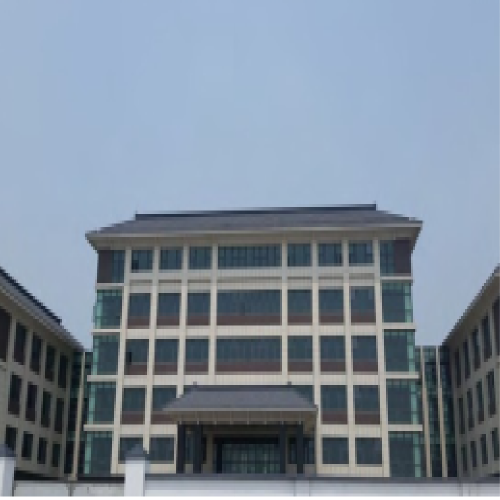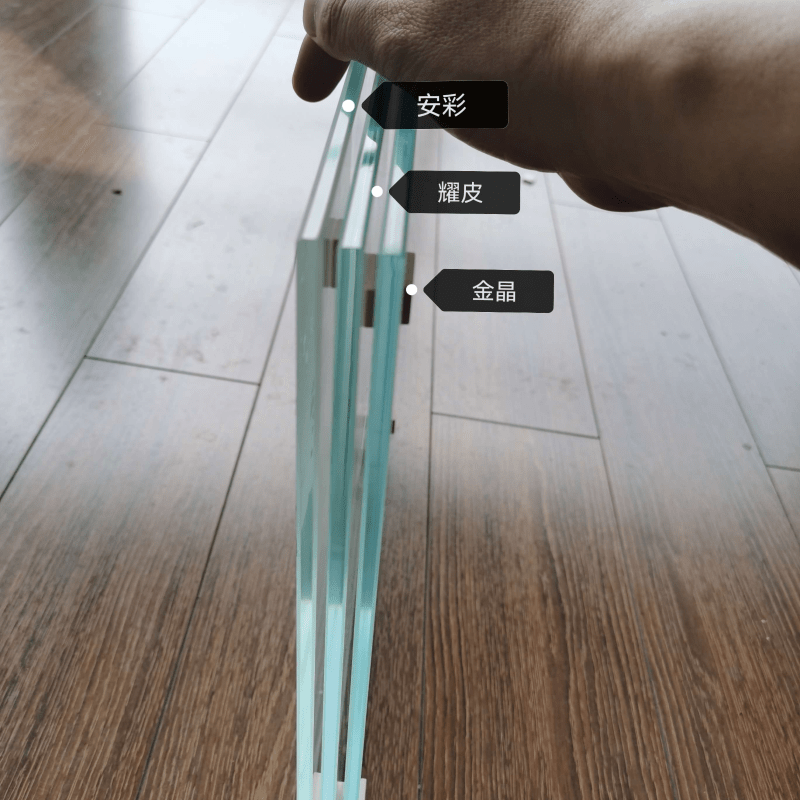The Science Behind Enhanced Light Transmission
Glass with special coatings uses advanced tech to improve how natural light passes through, making spaces look clearer and brighter overall. Some specialty treatments actually boost visible light transmission around 15% or so, which means better illumination inside buildings without relying so much on electric lights. At a microscopic level, these coatings work by blocking certain wavelengths we don't want while letting the good stuff through without any problems. This kind of innovation helps architects design spaces that make the most of daylight throughout the day. Not only does it look nicer, but it also saves energy costs in commercial buildings where lighting accounts for a big chunk of electricity bills.
Reducing Glare While Maximizing Natural Illumination
There are all sorts of coatings out there that cut down on the glare caused by direct sunlight, which makes them really important for places where people need good visibility, like office buildings or schools. Studies in architecture show these anti-glare solutions make a big difference in how comfortable occupants feel throughout the day. They basically create an environment where lighting feels balanced instead of harsh and uncomfortable. The way these coatings work is pretty clever actually - they reflect certain parts of the light spectrum that cause problems with glare while still letting in plenty of natural light. Most building managers find this approach works wonders for both employee productivity and overall satisfaction with workspace conditions.
Color Rendition Clarity in Indoor Spaces
Getting colors right matters a lot in places like art galleries and retail stores, because people need to see products exactly as they should look. Glass with special coatings helps maintain color accuracy so items appear bright and authentic, something that really affects how customers view things. Some market research shows better color rendering in shops actually boosts sales since products just look more attractive when displayed properly. These improvements in glass tech highlight why clear visuals and correct color depiction matter so much for businesses wanting to grab attention and keep shoppers coming back for more.
Types of Coatings for Optimal Lighting Performance
Low-E Coatings: Balancing Light and Thermal Control
Low emissivity or Low-E coatings play a big role in getting just the right amount of natural light into spaces without letting too much heat escape. The way these work is pretty clever actually they bounce heat right back where it came from, which means buildings don't have to work so hard to maintain temperature. Some recent research shows that when buildings switch to Low-E glass windows, their monthly energy costs can drop around 30 percent. How do they manage this? Simple enough really microscopic layers of special metal oxides get applied directly onto the glass during manufacturing. These tiny coatings stop excessive heat loss but still let plenty of daylight come through. For anyone concerned about keeping interiors comfortable year round while saving money at the same time, Low-E technology offers a solid solution that works across different climates and building types.
Solar-F Cool Technology for Visible Light Optimization
Solar-F Cool Tech works by letting in plenty of visible light while keeping most of the sun's heat out. The big problem it solves? Keeping spaces bright during the day without turning them into ovens. Tests show that buildings using Solar-F Cool glass can cut down indoor temps by as much as 5 degrees Fahrenheit compared to standard windows. That makes a real difference in cooling costs and puts less strain on air conditioning systems over time. For places where summer sun beats down hard like Phoenix or Dubai, these windows mean people don't have to run their AC so constantly. Architects love this tech because it fits right into green building plans without compromising on natural lighting which everyone agrees looks better than fluorescent lights anyway.
Ceramic vs. Liquid Glass Coatings Compared
Looking at ceramic versus liquid glass coatings shows each has its strengths based on what matters most for the job. Ceramic coatings tend to last longer and resist scratches better, though they do cut down on how much light gets through compared to liquid glass options. Tests show ceramic stands up pretty well against harsh weather conditions, which is why many people choose it for places that face tough outdoor elements over time. Liquid glass, on the other hand, lets in way more natural light and looks clearer, so it works great when good visibility matters, like windows in offices or homes. Picking one over the other really comes down to weighing how important longevity is versus getting maximum light into a space.
Applications in Residential and Commercial Design
Curtain Walls and Oversized Glass Installations
Coated glass in curtain walls is changing how buildings look these days, blending what's inside with what's outside pretty well. Architects love working with materials that let them create open, transparent spaces where sunlight just pours in from all angles. We've seen this trend pick up steam lately as people want more daylight in their homes and offices while still saving energy. Property values tend to go up when buildings feature lots of glass, according to several studies looking at real estate markets across different cities. Glass has become something of a staple material for modern designs because it simply works better than traditional options in many situations.
RV Windows and Mobile Living Solutions
RV windows made from specialized coated glass really matter because they help with insulation while keeping things light enough to boost fuel efficiency. With more people getting into mobile living these days, finding good quality materials that keep everyone safe and comfortable inside their rigs has become pretty important. The new coatings applied to RV windows do more than just let in better light and add some extra protection against break-ins they actually make life on the road nicer overall. Looking at recent surveys about what folks want when living outdoors, there's definitely been an uptick in satisfaction ratings since manufacturers started incorporating these improvements. That tells me RV window tech continues to evolve alongside our growing love affair with hitting the open road.
Skylights and Interior Partition Innovations
When installed in skylights, coated glass lets way more natural light into buildings, cutting down on the need for electric lights during the day and helping save energy overall. Research shows offices with good daylighting tend to have happier workers who get things done faster, which makes sense when we think about how humans respond to sunlight. Interior walls made with this special glass also work wonders. They give spaces that open feeling everyone wants these days but still keep private areas separate. Architects love working with coated glass because it allows them to create beautiful designs without sacrificing function. From homes to office buildings, this technology combines practical benefits with creative possibilities that traditional materials just cant match.
SYP Solar-F Cool Glass: Daylight Enhancement Solution
High-Temperature CVD Coating Durability
The SYP Solar-F Cool Glass features a chemical vapor deposition (CVD) coating known to hold up remarkably well even when exposed to harsh temperature extremes. What sets this coating apart is how it actually forms at the molecular level during manufacturing, creating a bond that really stands against things like UV radiation and thermal shock. Field tests over several years indicate these coatings can double or sometimes triple the life expectancy compared to standard architectural glass options. Maintenance crews report needing far fewer replacements and repairs, which translates into substantial savings across building lifecycles. For architects working on coastal developments or desert installations where materials face constant environmental stressors, this type of glass becomes practically essential rather than just another option on the spec sheet.

Superior Visible Light Transmittance Specifications
What really sets the SYP Solar-F Cool Glass apart is how much visible light it lets through compared to regular glass. We've seen buildings transform just by switching to this stuff. The numbers tell the story too good visual clarity paired with solid thermal properties means architects love working with it when designing energy efficient spaces. Tests from third party labs back up what we see on site too. Buildings with this glass get plenty of natural light during the day but stay cooler inside because it doesn't let in all that unwanted heat. That's why so many green building projects these days specify this particular glass type. From office towers to schools, it's becoming the go to solution for anyone wanting both comfort and efficiency in their structures.
Automotive and Architectural Project Applications
SYP Solar-F Cool Glass tech works really well in all sorts of places, not just cars but also in building designs. When installed in automobiles, drivers get better visibility without the annoying glare and excessive heat inside the cabin something that matters a lot for road safety. For buildings, this glass cuts down on how much we need to run air conditioning systems during hot weather months, which means lower electricity bills for property owners. What makes this material stand out is how easily it fits into different settings while still looking good and performing great whether it's part of a sleek new car model or incorporated into modern office complexes where comfort meets efficiency.
Energy Efficiency and UV Protection Synergy
Infrared Reflection for Thermal Comfort
Coated glass that reflects infrared light makes a big difference in how comfortable people feel inside buildings, and it helps save energy too. Studies show that buildings with infrared reflective coatings on their windows need less air conditioning during hot weather because the coating keeps heat out. This means lower electricity bills and less strain on cooling systems. When architects design green buildings, they often include this kind of glass since it supports both comfort and environmental goals at the same time. Glass that blocks infrared radiation while letting visible light through creates spaces where temperatures stay steady without costing extra energy, making it a smart choice for offices, schools, and homes looking to cut costs and reduce their carbon footprint.
Ultraviolet Radiation Blocking Capabilities
Glass with quality coating does a great job at stopping those damaging UV rays from getting through, which helps keep things inside buildings looking fresh and prevents them from breaking down over time. Research indicates these special coatings cut out around 99% of the bad stuff we don't want coming in, so our couches stay colorful longer, paintings don't fade away, and all sorts of stuff inside stays in good condition. This really matters a lot in places where the sun beats down hard throughout the year, or in spots like art museums where they need to protect priceless works from getting ruined by sunlight. When materials don't fade or start falling apart because of UV damage, spaces look better overall and nobody has to spend money fixing or replacing things as often as they would otherwise.
Long-Term Performance in Various Climates
Glass products with special coatings are built to last through all sorts of weather changes while keeping their performance intact. Real world testing shows these coatings keep working for years on end, which means buildings stay efficient whether it's freezing outside or sweltering hot. Most industry experts agree that picking the correct type of coating matters a lot when it comes to how well they hold up against time and elements. When architects design buildings for places with extreme temperature swings, going with the right glass coating isn't just about looks anymore it actually protects the whole structure from damage and keeps energy bills under control for decades.
